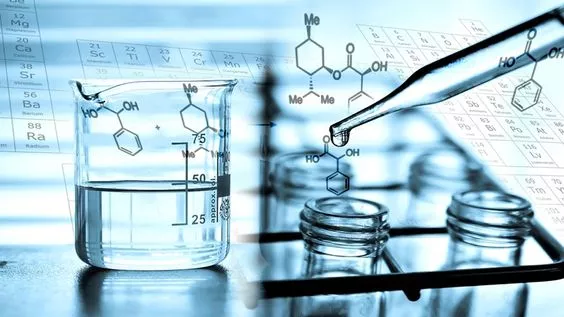What is Phosphoric Acid?
Are you having trouble understanding the complex world of industrial chemicals?
Let’s explore one of most widely used acids across various industries – phosphoric acid.

Introduction to Phosphoric Acid
Phosphoric acid is an important inorganic compound with chemical formula H3PO4. It is also known as Ortho-Phosphoric acid. It’s a colorless and odorless solid that people usually find in aqueous solution.
Phosphoric acid plays a big role in various industries, especially in making fertilizers and food additives. The chemical formula H3PO4 means each molecule consists of 1 phosphorus atom bonded to 4 oxygen atoms, with 3 of those oxygen atoms attached to hydrogen atoms. This structure is why it’s called Ortho-Phosphoric acid – to tell it apart from other types of phosphoric acid like pyrophosphoric acid and metaphosphoric acid.
Phosphoric acid goes by several common names and ID codes. Its Chemical Abstracts Service (CAS) number is 7664-38-2. Its formal International Union of Pure and Applied Chemistry (IUPAC) name is orthophosphoric acid. Other casual names people call it are monophosphoric acid and phosphoric(V) acid. These help distinguish phosphoric acid from related compounds and make sure there’s no confusion when shopping for this acid.
Chemical and Physical Properties of Phosphoric Acid
Phosphoric acid (H3PO4) has a tetrahedral molecular structure, with one central phosphorus atom bonded to three hydroxyl (-OH) groups and a single oxygen atom via a double bond. This arrangement gives rise to compound’s chemical formula and how it acts as a triprotic acid.
The acidity of phosphoric acid is an important property. As a triprotic acid, it can donate up to three protons (H+) when in aqueous solutions. Dissociation of phosphoric acid occurs in three stages. Each step has its own distinct acid dissociation constant (Ka).
But the question is; is phosphoric acid a strong acid?
Well, although it can donate multiple protons, phosphoric acid is generally classified as weak acid when compared to other mineral acids such as hydrochloric acid or sulfuric acid. pKa values for phosphoric acid’s three dissociation steps are 2.15, 7.20, and 12.32 respectively. These dissociation values shows that phosphoric acid does not fully dissociate in aqueous solutions.
Physical Characteristics of Phosphoric Acid
| Property | Pure Solid | phosphoric acid 75 | phosphoric acid 85 |
| Appearance | White, crystalline solid | Colorless, odorless liquid | Colorless, odorless liquid |
| Density (g/cm³) | 1.834 | 1.574 | 1.686 |
| Melting Point (°C) | 42.35 | N/A | N/A |
| Boiling Point (°C) | 407 | N/A | N/A |
Pure phosphoric acid is a white, crystalline solid with a density of 1.834 g/cm3. It melts at 42.35°C and boils at 407°C.
The 75% and 85% phosphoric acid solutions are see-through, odorless liquids. 75 phosphoric acid density is 1.574 g/cm3 and 85 phosphoric acid density is 1.686 g/cm3.
How Phosphoric Acid is Made
There are two main methods to produce phosphoric acid. First one is “wet method” and second is “thermal method.”
Wet method works by taking phosphate rock and mixing it with concentrated sulfuric acid. This reaction makes phosphoric acid, and also gypsum a byproduct. The exact makeup of the phosphoric acid or what is in phosphoric acid depends on the production approach.
With the wet process, you usually get merchant-grade phosphoric acid that’s 75-85% H3PO4. The thermal method takes more energy but makes a super-pure, concentrated phosphoric acid (85% P2O5). This type is good for use in foods, pharmaceuticals and chemicals. One downside is that wet method makes some waste products that need careful management so they don’t hurt the environment. These managements include cooling water with acid and hydrogen fluoride gas.
The thermal route starts by taking the phosphate ore and reducing it to basic phosphorus.
Next, it gets burned to make phosphorus pentoxide.
Finally, adding water turns it into concentrated phosphoric acid.
So in summary – there are two main production methods, but the thermal approach makes very high-purity acid suitable for things like food and medicine. Managing waste is important in the wet method to avoid ecological impacts.
Phosphoric Acid Uses
Phosphoric acid plays a huge role in industry, with uses across many areas, but especially as an ingredient in fertilizer manufacturing. Around 90% of all the phosphoric acid produced gets used to make fertilizers. Food-grade phosphoric acid also serves important functions in the food sector.
Industrial Applications of Phosphoric Acid
Phosphoric acid is not bound to make fertilizers only. It has many other uses in various industries and businesses.
Rust removal with phosphoric acid: Phosphoric acid’s rust remover property is very effective for removing rust from the surface of metals. It converts iron oxide into soluble ferric phosphate. This cleans metal and leaves an anti-corrosion layer to prevent rust in future.
Phosphoric acid for metal treatment: A very pure 85% ACS grade of phosphoric acid is popular for cleaning, etching, and corrosion-proofing metals. You’ll see this a lot with cars, planes and construction equipment.
Phosphoric acid cleaner: As a powerful cleaner, phosphoric acid can scrub off super tough stains, mineral buildup, and gunk from all kinds of surfaces. It gets used in industrial-grade cleaners and sanitizers for equipment.
Water treatment: A more diluted 75% phosphoric acid helps adjust pH in wastewater plants to stop scale from forming in their pipes and gear.
Other applications of phosphoric acid: Phosphoric acid has some specialty uses too – things like phosphoric acid fuel cells, making activated carbon, semiconductor manufacturing, and as a chemical oxidizers.

Phosphoric Acid in Food and Beverages
Food grade phosphoric acid plays several crucial roles in the food and beverage sector:
Flavor enhancement: It adds a sharp, sour flavor to soft drinks, especially colas, which defines their unique taste.
pH control: Acting as an acidulant, phosphoric acid ensures that pH level of various products stays consistent, preserving taste and quality.
Preservative: Its acidic nature helps keep mold and bacteria away in sugary solutions, making our favorite beverages last longer on the shelf.
Dairy applications: When making cheese, buttermilk, and other dairy items, phosphoric acid comes into play to modify protein structures and help with coagulation.
Beverage use: Beyond the famous role it plays in soft drinks, you’ll find phosphoric acid in teas, flavored waters and fruit-flavored beverages. You’ll also find phosphoric acid in Coke. It’s especially important for giving Coca-Cola and other colas that tangy zing.
Conclusion
In summary, phosphoric acid has a wide range of uses and is an important chemical for many industries. From fertilizers to food production, phosphoric acid plays a very important role. But it’s necessary to handle it safely.
Beyond the main uses of phosphoric acid mentioned above, phosphoric acid has other uses also – like in fuel cells, as phosphoric acid etch, and even to clean grout with phosphoric acid grout.
So if you are looking for quality phosphoric acid then Mondstar is your best choice. As a reputable distributor, Mondstar has over 10 years of experience in field of raw chemicals and food additives. Their commitment to supplying quality products all across globe and great customer service make them top choice among China’s chemical providers. For any query about phosphoric acid and other chemicals, feel free to contact us.
Related Posts:
1. FAQs about buying Xanthan Gum
2. common additives in food
